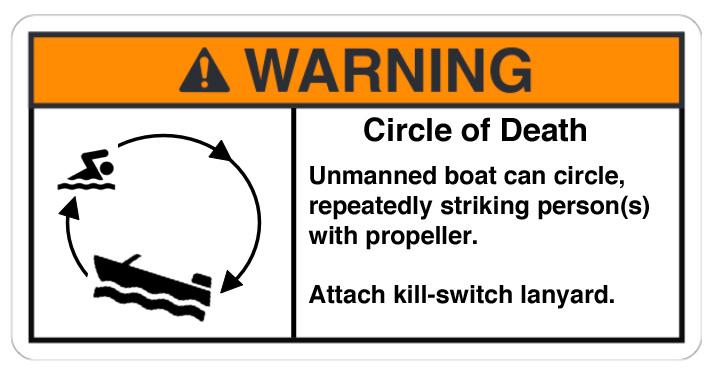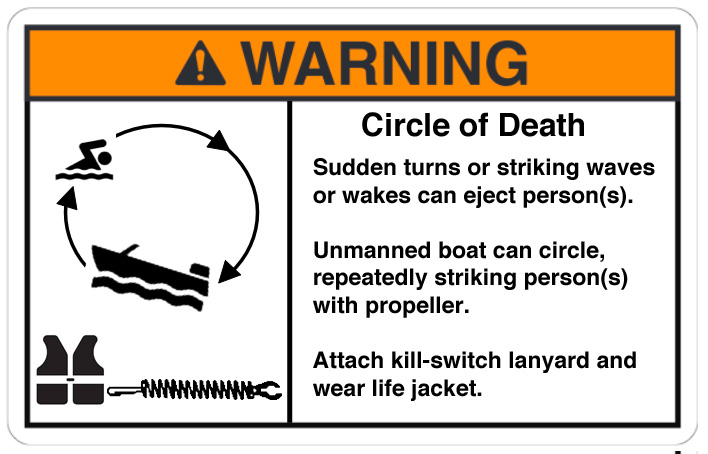Circle of Death Warning
It has long been known that if you take you hand off the tiller or steering wheel, many outboard powered boats will circle hard to the right due to propeller torque. The boating industry has had various name for it through the yeaers. In the 1980’s some called it the “Circling Phenomenon”. Some call it a “runaway boat”. In today’s world, the industry is calling it “ongoing operation”
A boat can strike a wave or wake ejecting the operator (and typically the passengers), the boat goes into the circle of death, and keeps running over those in the water with its propeller until they get out of the way or it runs out of gas.
The same thing can happen if an operator temporarily removes their hands from the steering wheel or tiller, sometimes to grab something blowing at them, off of them, or past them. The boat swerves hard to the right, ejects the operator (and often the passengers) and begins to circle.
“Circle of Death” is a more descriptive phrase and better teaches of the hazard than “ongoing operation”.
Current boating industry warnings related to kill switches (which the industry does not call kill switches any more) do not come out and specifically teach or or warn of the Circle of Death.
I constructed a couple examples of warnings that could teach of the Circle of Death and posted them below.
The example above is a little smaller than the example below which includes an image of of the lanyard with a life jacket.
Both warnings were prepared with an eye toward the ANSI Z535.4 warning standard. While ANSI has very strict rules on colors, font sizes, and other issues, the examples we present above should be useful to those thinking about developing such a warning that is ANSI Z535.4 complaint.
We are not saying these are great warnings, and certainly do not encourage the industry to copy them and place them into service. They are just a place to begin a discussion and develop a better warning or at least a means to educate boaters of the hazard.
We welcome any suggestions you may have as the best warnings are typically generated as a group effort.

